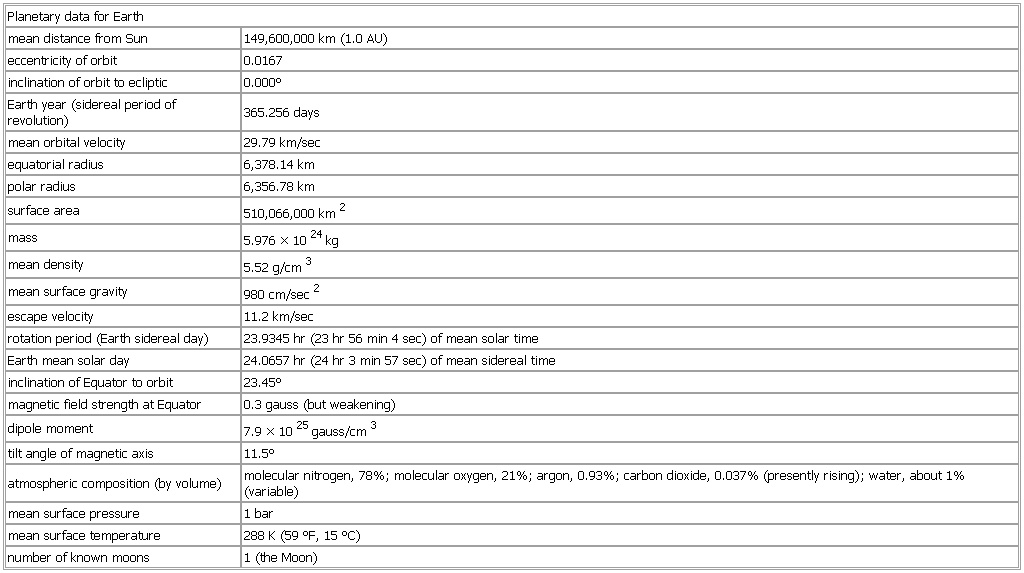- Planetary data for Earth
-
▪ TablePlanetary data for Earthmean distance from Sun 149,600,000 km (1.0 AU)eccentricity of orbit 0.0167inclination of orbit to ecliptic 0.000°Earth year (sidereal period of revolution) 365.256 daysmean orbital velocity 29.79 km/secequatorial radius 6,378.14 kmpolar radius 6,356.78 kmsurface area 510,066,000 km2mass 5.976 × 1024 kgmean density 5.52 g/cm3mean surface gravity 980 cm/sec2escape velocity 11.2 km/secrotation period (Earth sidereal day) 23.9345 hr (23 hr 56 min 4 sec) of mean solar timeEarth mean solar day 24.0657 hr (24 hr 3 min 57 sec) of mean sidereal timeinclination of Equator to orbit 23.45°magnetic field strength at Equator 0.3 gauss (but weakening)dipole moment 7.9 × 1025 gauss/cm3tilt angle of magnetic axis 11.5°atmospheric composition (by volume) molecular nitrogen, 78%; molecular oxygen, 21%; argon, 0.93%; carbon dioxide, 0.037% (presently rising); water, about 1% (variable)mean surface pressure 1 barmean surface temperature 288 K (59 °F, 15 °C)See as table:

* * *
Universalium. 2010.
